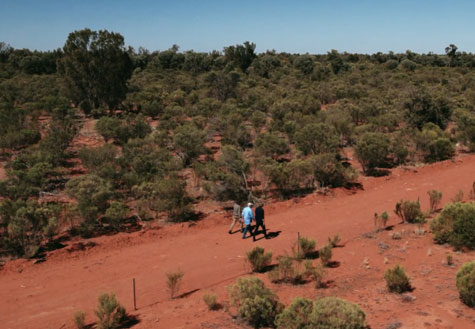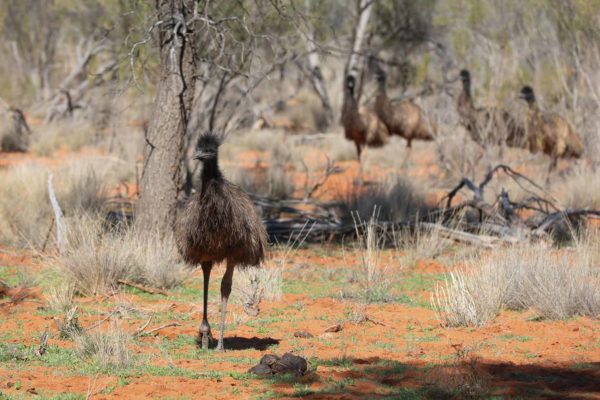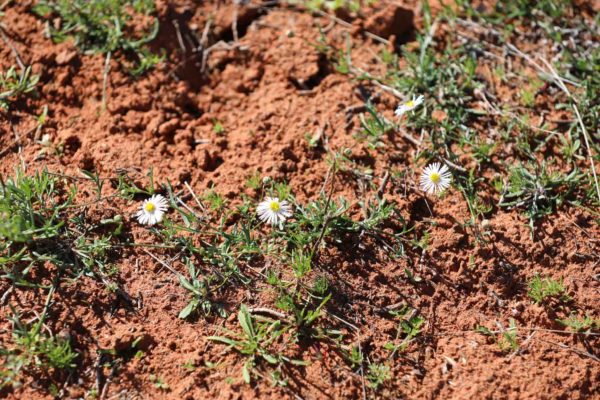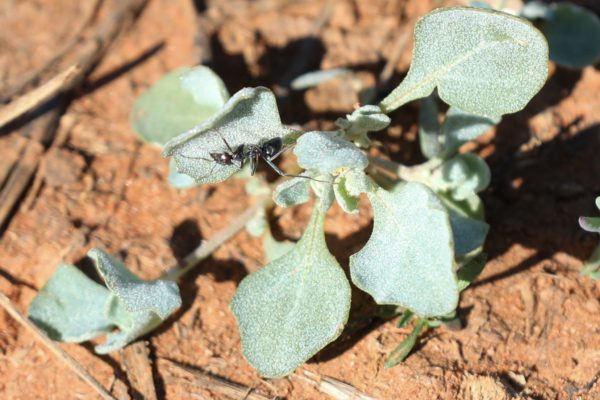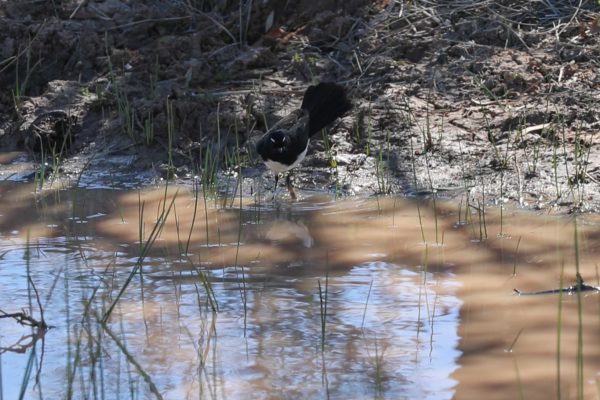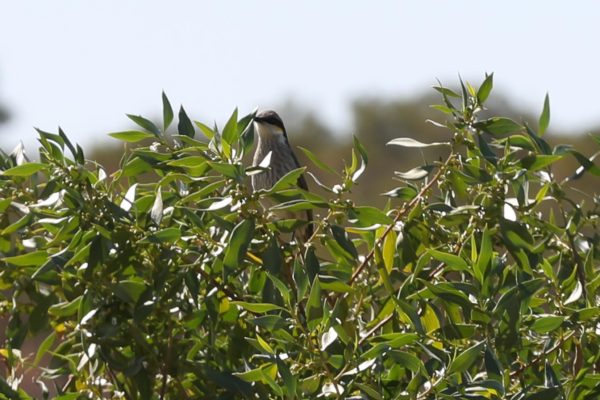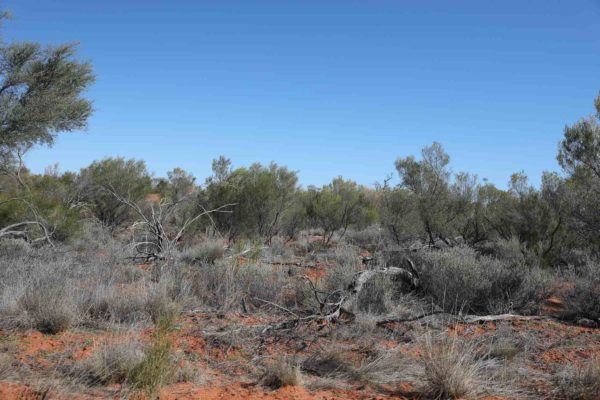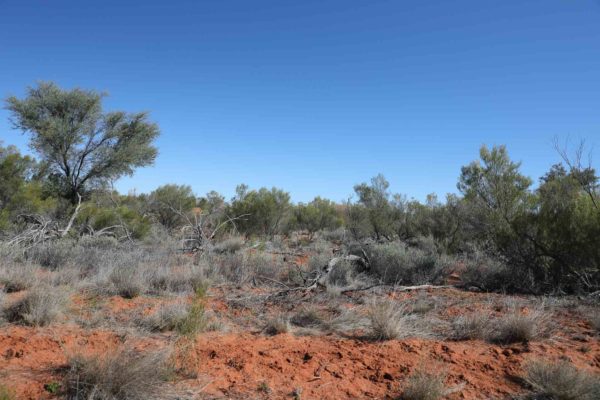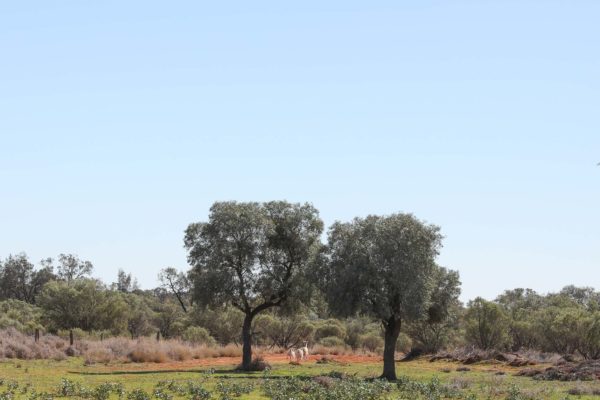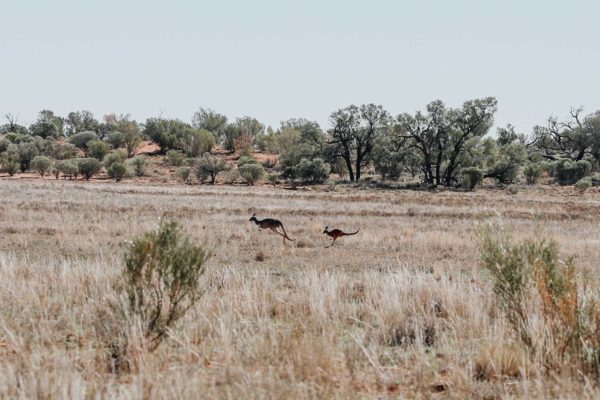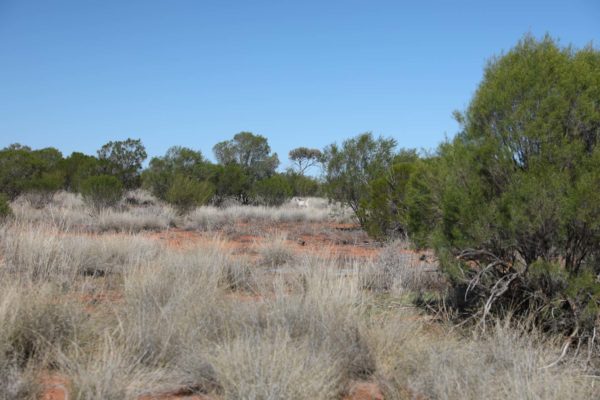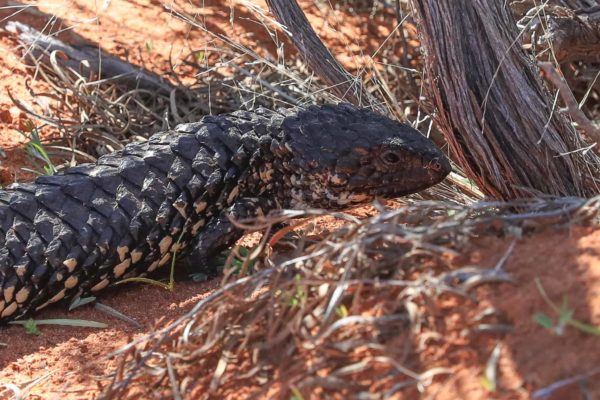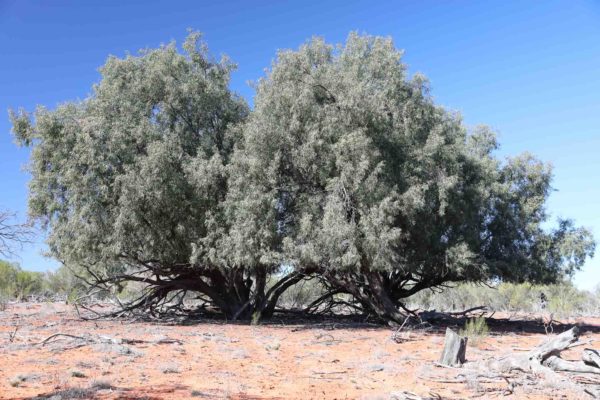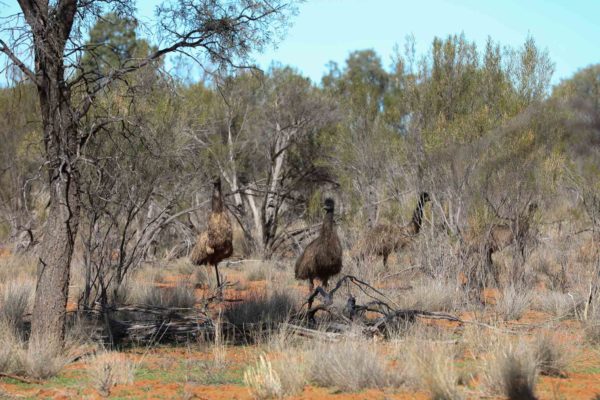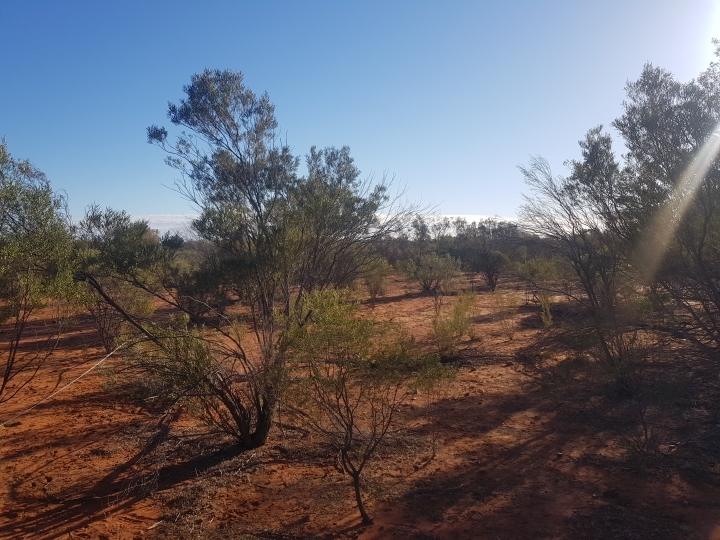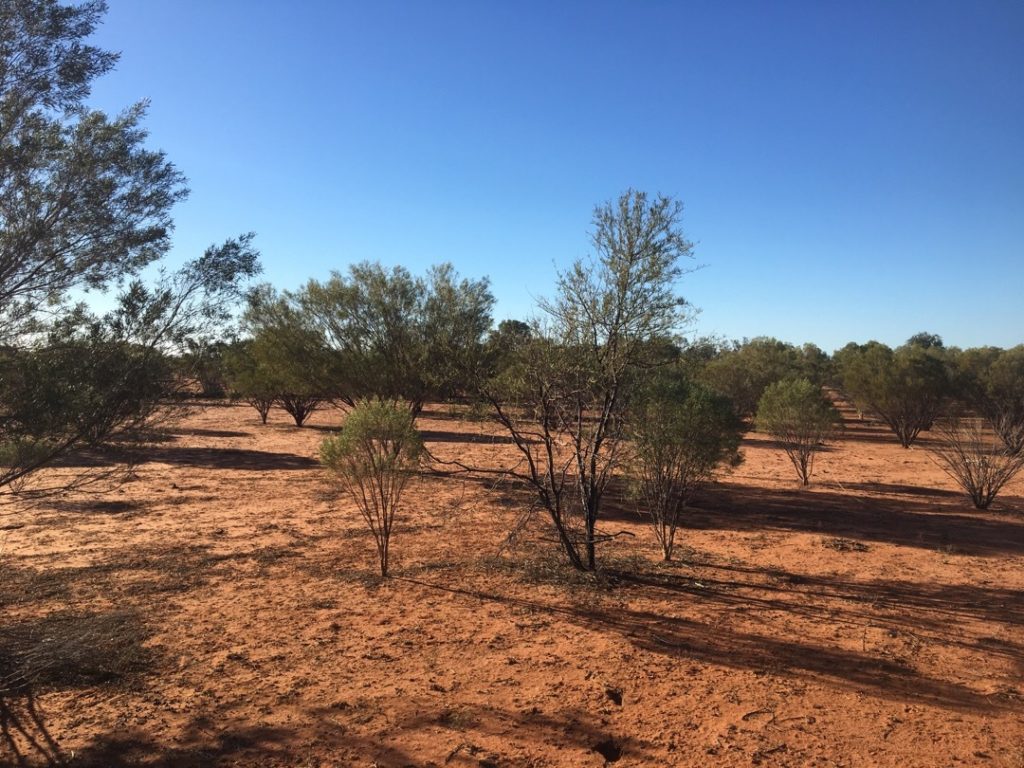Project Information
Darling River Eco Corridor 27
Human Induced Regeneration
Roughly 150km west of Bourke, NSW Goonery and Tringadee sit side by side across the undulating red sandy loam soils of the Mulga lands bioregion. Angelo Di Petta has run Goonery since 2004, and along with his business partner Richard Nielsen, has also run Tringadee since 2011.
These days, the two properties run both sheep and cattle depending on the season, but before the pair started their Human-Induced Regeneration project, both properties were suffering due to overgrazing and limited controls on feral animals.
Tringadee in particular was under strain because a lack of basic infrastructure was rendering more than half the property useless for grazing. As a result, the useable areas were being overgrazed and this pressure on vegetation was flowing over to Goonery.
The project has enabled Angelo and Richard to upgrade existing fences and install new internal fences and water points that allow rotational grazing across the properties. Repairs to boundary fences have restricted the movement of feral goats, and trapping efforts have been increased to keep the population under control. This along with a small reduction in stocking numbers has allowed native vegetation to regenerate including Mulga, Gidgee, Leopardwood, Rosewood, Hop Bush and Turpentine.
Angelo describes the project as a strategic investment with a potential upside and capped downside. Tringadee is essentially ring-locked now – where they used to remove around 1,200 feral goats from the property, they’re now lucky to get 60. And while Angelo recognises the goats themselves could have been a source of income, in his view the productivity of income wouldn’t have been maintained. He describes the carbon project as a longer-term strategy, saying the project is; “easy to manage, diversifies farm income, and offers security of that income long term.”
Key Benefits
UN Sustainable
Development Goals

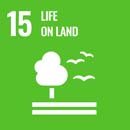
Statistics
Methodology
Human-Induced Regeneration of a Permanent Even-Aged Forest 1.1 methodology (2013)
Registered ID
Date registered
February 2018
Project area
20,749 ha
Permanence
25yrs
Location
Bourke, New South Wales
This project is located West of Bourke in NSW in the Mulga Lands bioregion. The land consists of slightly undulating red sandy loam soils. The dominant species observed on the property from field surveys include Dodonaea viscosa, Eremophila sturtii, Eremophila longifolia, Eucalyptus populnea and Alectryon oleifolius.
The objective of this project is to regenerate natural woodlands and shrublands. This is achieved by controlled grazing and feral animal management across the project area along with fencing upgrades. In addition to sequestering carbon, regeneration of native vegetation in the project area reverses land degradation caused by feral goats and livestock and stabilises soils reducing erosion.
The Project (ERF115288) was declared project under the ‘Human Induced Regeneration of a Permanent Even-Aged Forest 1.1’ methodology (2013 c2) (the Determination) and generates Australian Carbon Credit Units (ACCUs). This is the fourth version of the Human Induced Regeneration methodology.
The project has issued Kyoto ACCUs in accordance with the date the carbon sequestration occurred. Kyoto ACCUs are issued for all carbon sequestration which has occurred after 14 May 2013 and non-Kyoto ACCUs are issued for carbon sequestration that occurred prior to this date.
| Methodology Determination | Human-Induced Regeneration of a Permanent Even-Aged Native Forest – 1.1 Methodology Determination 2013 c2 |
| Project Declaration Date [1] | 01 February 2018 |
| Permanence Period | 25 years |
|
Baseline Period [2] (10 year period before project application) |
November 2007– November 2017 |
|
Baseline management (Management during the Baseline Period) |
Suppression of development of forest cover through uncontrolled livestock grazing, uncontrolled feral animal populations. Confirmed by evidence. |
|
Modelling Commencement Date [3] (Date at which sufficient regeneration had started in the CEA) |
01 January 2014 & 01 January 2015 Note: the method requires there to be some vegetation present, at the modelling commencement in order to confirm that the area has the capacity to regenerate. |
| Modelling Tool | FullCAM 2016 |
| Audit | There has been 1 audit undertaken by registered Greenhouse and Energy Auditors which has confirmed the project complies with the Methodology Determination and the requirements of the CFI Act in all material respects for the periods audited. The most recent audit report was issued on the 04 September 2018. |
HIR project Carbon Estimation Areas
What are Carbon Estimation Areas?
A CEA is an area of land within a project area where the project activity or activities are being carried out to sequester carbon (for example, the cessation of mechanical or chemical clearing or management of timing and extent of grazing to enable regeneration of vegetation to forest) and for which ACCUs can be credited[4].
These are the areas where project activities occur and where carbon abatement will be modelled applying standardised estimation formulae approved by the Clean Energy Regulator. There can be one or many CEAs on a Project Area.
Each CEA must contain areas of eligible land greater than 0.2ha in size in which the project activities are implemented and which have started to become native forest through regeneration.
- Eligible Land is land that didn’t have forest cover during the baseline period (ie. the 10 years before the Project Application was made) and which has been used or managed in a way that suppresses development of forest cover.
- A particular area of land has Forest cover if the land has an area of at least 0.2 of a hectare and has trees that are 2 metres or more in height and provide crown cover of at least 20% of the land.
Stratification of Darling River Eco Corridor 27 HIR Project Area into CEAs
Stratification is the process of “demarcating the boundaries of CEAs from ineligible and non-implementation areas within a project area”[5].
There are Guidelines setting out how Project Areas are stratified into CEAs. These include rules about evidence, stratification and record keeping to support the requirements in the CFI Rule 2015 (2018 and 2019 Amendments) including key method eligibility requirements.
Stratification of the Darling River Eco Corridor 27 HIR Project was carried out in accordance with the Determination and first reported to the Clean Energy Regulator for a reporting period ending 31 July 2018.[6]
A summary of the stratification of the Darling River Eco Corridor 27 HIR Project is set out below:
| Project Area | 37,575 hectares |
| Number of Carbon Estimation Areas (CEA) | 47 |
| Total Carbon Estimation Areas (CEA) Size | 20,749 hectares |
| Total area excluded from CEA | 16,825 hectares |
|
Excluded from CEA – Pre-existing forest cover (forest present at any time during the baseline period) |
6,789 hectares |
|
Excluded from CEA No forest potential (areas of land that do not meet the requirements of forest potential) |
3,754 hectares |
|
Excluded from CEA Non-project area (areas of land that are within the project area but excluded for other reason e.g. infrastructure or areas excluded for production purposes) |
6,282 hectares |
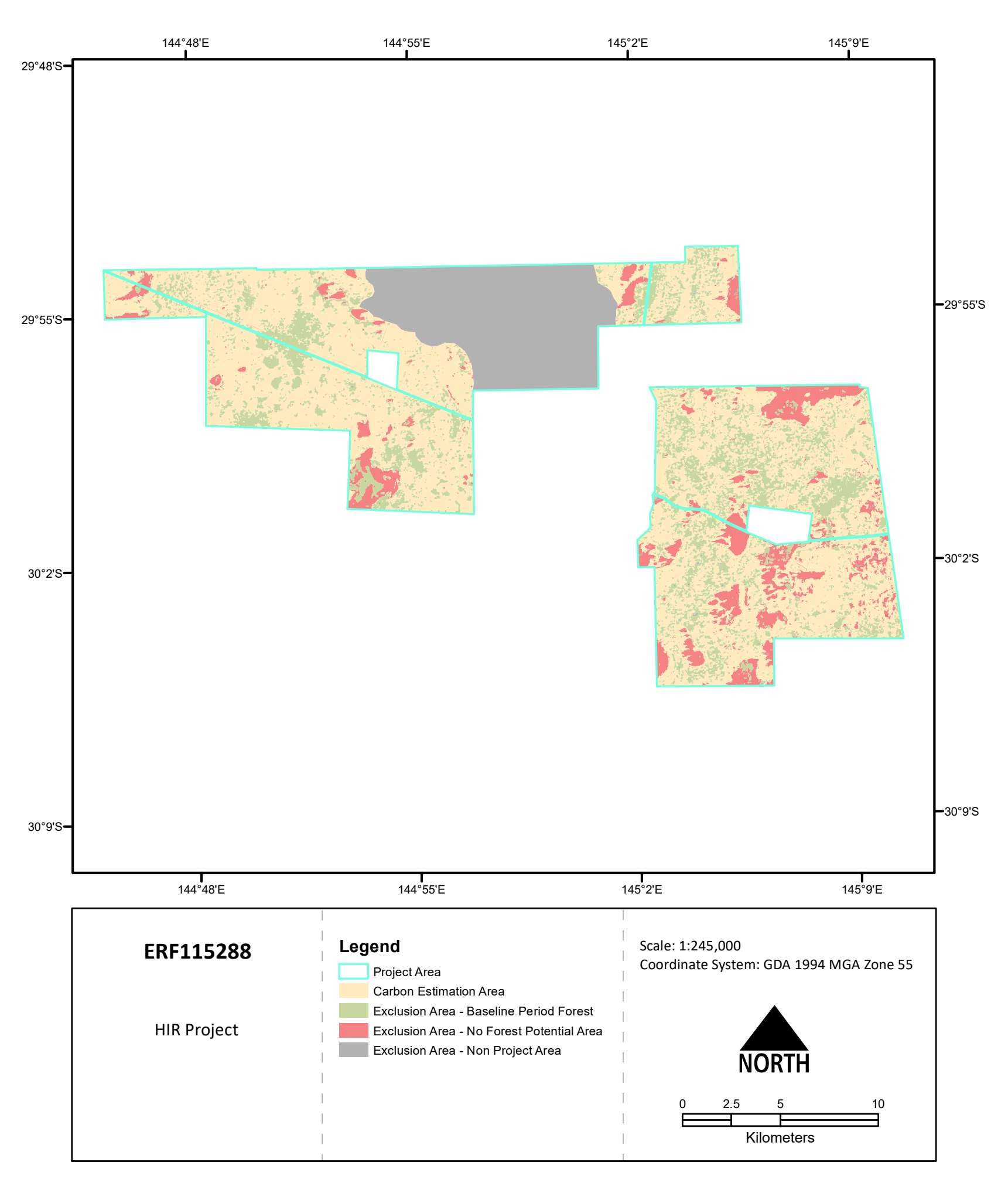
This map shows the project area boundary and the different elements of project design including the carbon estimation areas and exclusion areas. This stratification may reflect both initial stratification and subsequent revisions.
In order to inform the initial stratification of the Darling River Eco Corridor 27 HIR project in accordance with the Determination, GreenCollar carried out field surveys and data collection. This included collection of data on existing vegetation species, photos and a detailed site description.
Satellite imagery and remote sensing datasets were used to identify eligible land and exclusion areas. The extent of exclusion areas (totalling 16,825 ha), comprised of pre-existing forest cover (6,789 ha) and areas which classified as having no forest potential (3,754 ha). Through this process a final eligible CEA area of 20,749 ha was confirmed.
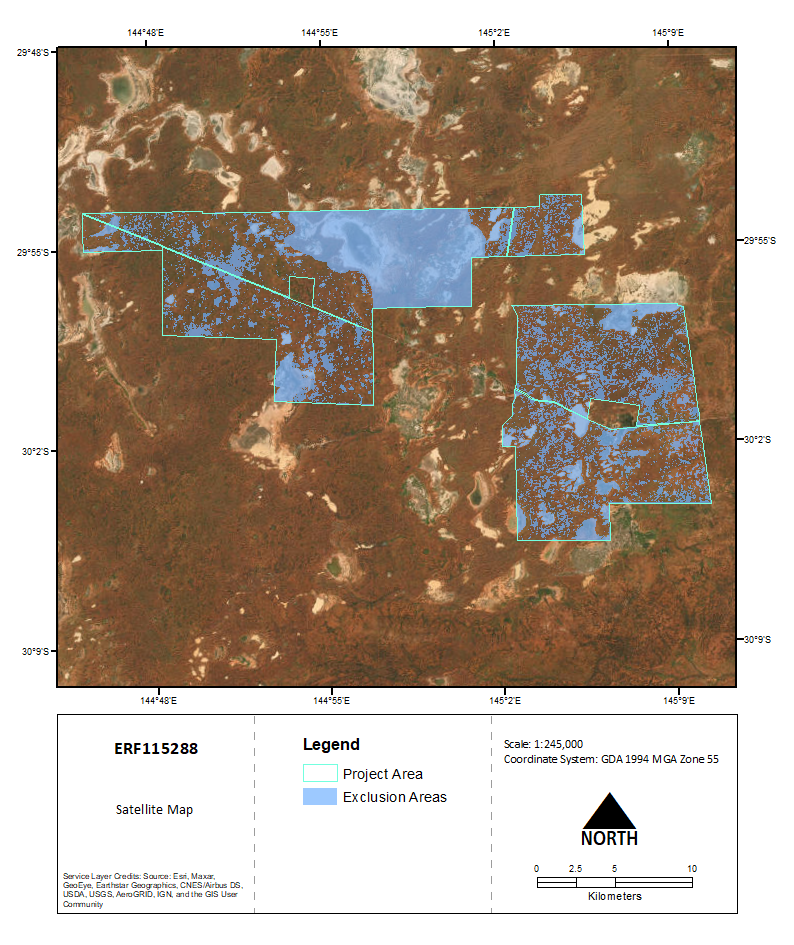
This maps shows a current satellite image of the project area. Satellite imagery and remote sensing datasets were used to identify eligible land and exclusion areas.

This map shows a summary of all CEA and Exclusion Areas.
Project Sequestration and Abatement
This version of the HIR Methodology requires using Full Carbon Accounting Model (FullCAM) to determine the sequestration of carbon stocks and emissions required to calculate the net abatement amount for each reporting period. The carbon dioxide equivalent net abatement amount in relation to a reporting period for the project is taken to be the change in carbon stock for the project area less the project emissions. Any carbon stock that accumulated by the crediting start date for the project is calculated as the initial carbon stock and is removed from the calculation of abatement as the proponent is not entitled to credits for it.
See below for the average per hectare sequestration for the Darling River Eco Corridor 27 HIR project.
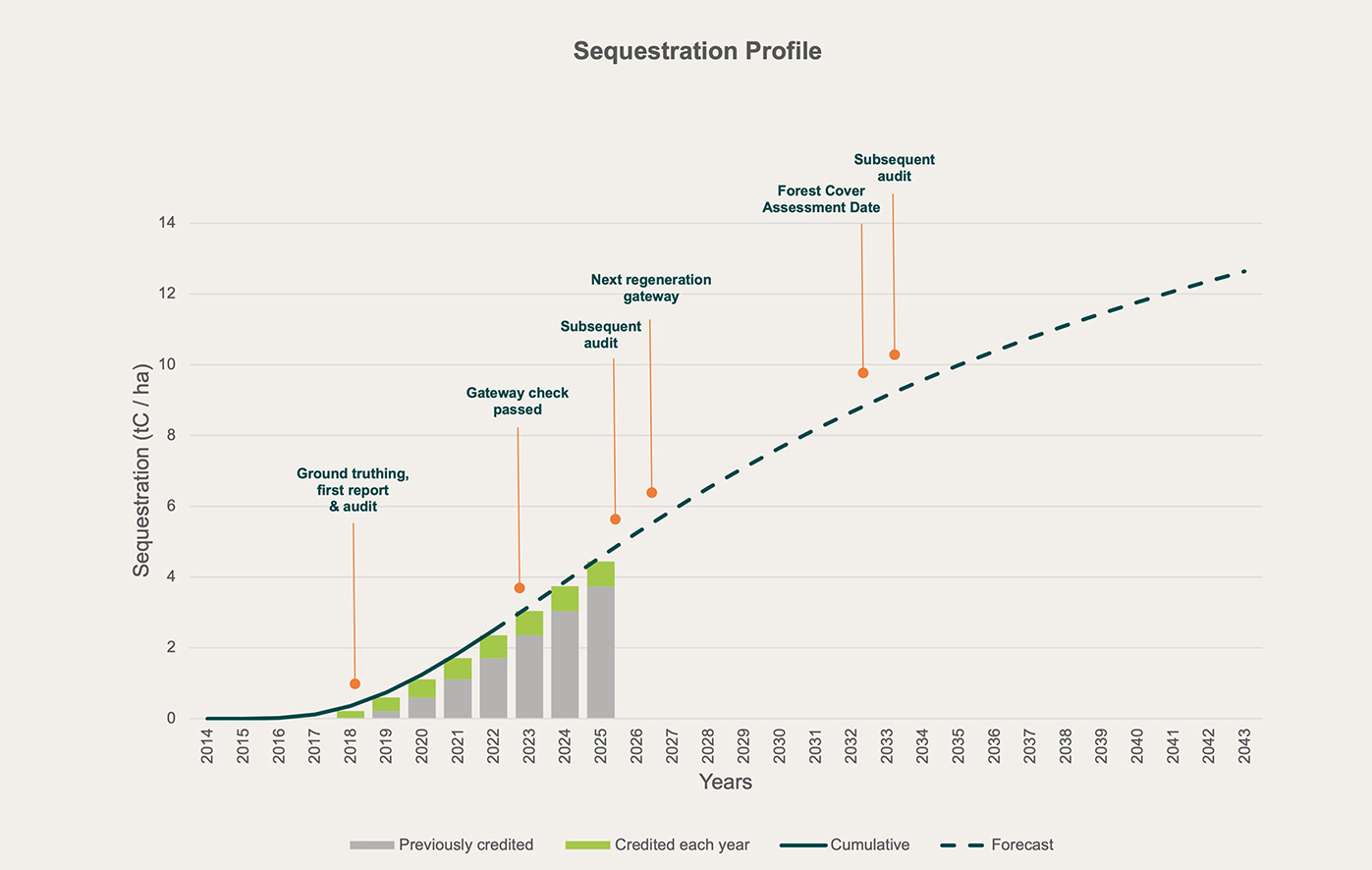
Implementation & Monitoring
The activities for the project are:
- the management of the timing & extent of grazing, and
- the management, in a humane way, of feral animals
Since project commencement these activities have been undertaken across the project area to assist the regeneration of native forest in attaining forest cover. Once the initial offsets report has been completed, GreenCollar works closely with the land manager of the project property to collect land management information every quarter. This is reviewed and reported on in each offsets report.
A summary of monitoring activities and evidence collection undertaken on this project is set out below:
- Evidence collection in relation to grazing and herd management
- Evidence collection in relation to removal and reduction of feral animals
- Evidence of fire management activities
- Evidence collection from land manager as to other land management activities as relevant
- Change detection assessments
- Repeat biomass inventory surveys to track biomass change of regenerating vegetation
- Daily fire hotspot monitoring and review of Seasonal Fire Risk
- Review of SPEI drought index
- Regeneration Gateway Checks
These surveys are currently not required under the HIR method but are implemented by GreenCollar to provide additional assurance that biophysical threats to carbon stores such as grazing, drought and fire are not negatively impacting the regeneration and to track progress of regeneration of the native forest. In addition, the data collected is utilised for broader research purposes.
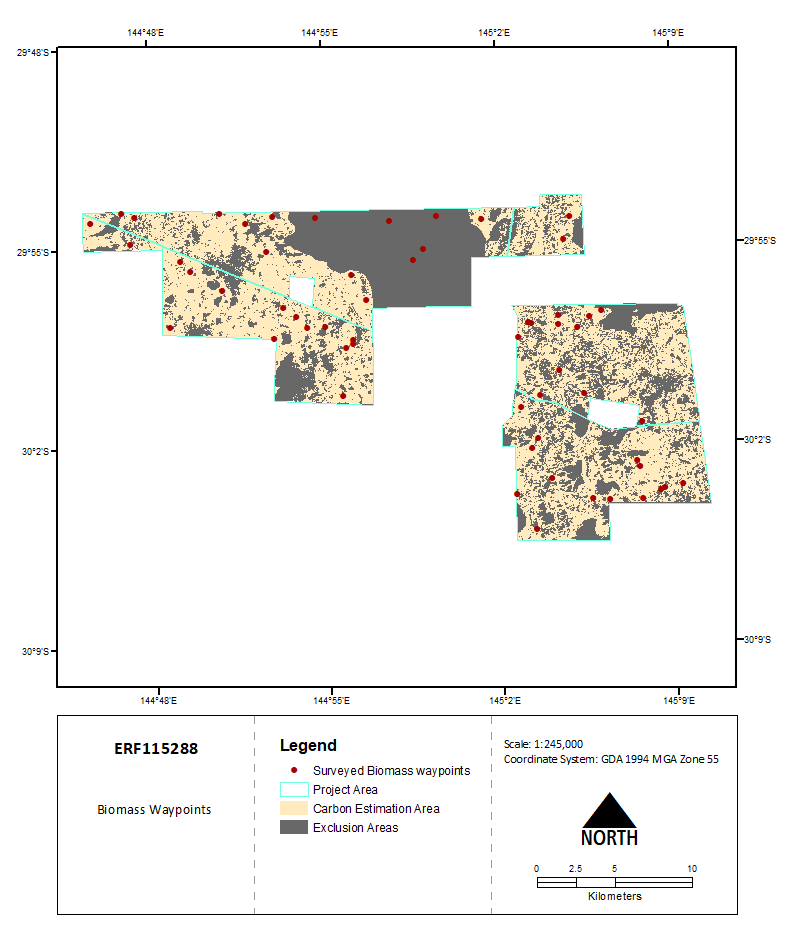
This map shows the points within the project area where vegetation biomass surveys were conducted as part of the monitoring process.
A Biomass Waypoint is a randomly allocated point within the project area where sampling data is collected.
Regeneration Checks
The Guidelines require that Proponents must provide regeneration checks at least once every five years from the start of the project’s last or only crediting period until CEAs pass their forest cover assessment date[7], and upon request by the Clean Energy Regulator.
A summary of regeneration checks required for the Darling River Eco Corridor 27 HIR Project is set out below:
|
Regeneration Check: Year 6 7.5% canopy cover at 100ha scale[8] |
01 February 2023 – Completed |
|
Regeneration Check: Year 10 10% canopy cover at 10ha scale[9] |
01 February 2027 |
| Forest Cover Assessment Date [10] | 01 February 2033 |
The process and methodology includes one or more of the three evidence requirements and reporting:
- Evidence level 1: Change detection analysis, or
- Evidence level 2: Remote sensing analysis and/or
- Evidence level 3: Field data; and
- Reporting
Project Area Files
GIS shapefiles for the project can be downloaded here. These files detail the project stratification including the carbon estimation areas and exclusion areas.
[1] Carbon Credits (Carbon Farming Initiative) Act 2011 Section 27
[2] Carbon Credits (Carbon Farming Initiative) (Human-Induced Regeneration of a Permanent Even-Aged Native Forest—1.1) Methodology Determination 2013 c2 Section 4
[3] Carbon Credits (Carbon Farming Initiative) (Human-Induced Regeneration of a Permanent Even-Aged Native Forest—1.1) Methodology Determination 2013 c2 Section 28
[4] Guidelines on evidence, stratification and records 8 May 2019
[5] Guidelines on evidence, stratification and records 8 May 2019
[6] The initial stratification was reported on prior to the public release of the Guidelines on stratification, evidence and records in May 2019. These guidelines also set out administrative arrangements for projects that have previously reported, including a pragmatic approach that will be taken in situations where additional evidence is required to meet these guidelines. Additionally, the project is defined as an existing project in accordance with Section 9AA of the CFI Rule 2015.
[7] Forest cover assessment date has the same meaning as that given by section 9AA(6) of the CFI Rule.
[8] Guidelines on evidence, stratification and records 8 May 2019
[9] Guidelines on evidence, stratification and records 8 May 2019
[10] Carbon Credits (Carbon Farming Initiative) Rule 2015 Section 9AA(6)

